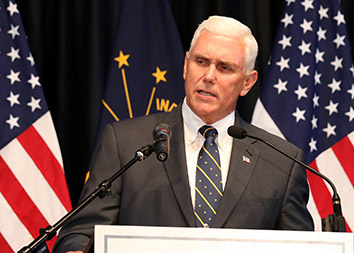Pence could leave state with no energy standards for buildings
Indiana could be without an energy code for up to two years after the Pence administration decided against extending the current one—a move that critics say could have negative results for Hoosiers’ energy bills and lead to a “slumlord’s dream” scenario.
The state’s energy conservation code—which covers commercial buildings and apartments and sets minimum energy standards—expires Dec. 31.
Groups including the American Institute of Architects hoped the Pence administration would extend the code for one year while it worked on updated rules. The current code is based on 2007 industry standards.
But state officials say that the Fire Prevention and Building Safety Commission “could not” readopt the former code after two groups requested changes. To make changes, an agency must launch a new rule-making process that can take up to two years.
Without renewing the rule in the meantime, the state will be without a code to dictate requirements for heating and air, insulation and lighting systems.
“The commission is pursuing energy code adoption, but the final product will take time to come to fruition,” said spokesman John Erickson of Indiana’s Department of Homeland Security.
But the groups say that is the opposite of what they wanted, and that they’re still hoping the Pence administration extends the code by the deadline.
Isaac Elnecave, senior policy manager for the Midwest Energy Efficiency Alliance, said he was shocked to hear that his group’s request to update the state’s energy standards could lead to a decision not to renew current ones.
“I have never heard of a state that suspends an actual code while an upgrading process is underway,” Elnecave said. “That was absolutely not the intention here, to put it bluntly. It actually is the opposite of what we asked for.”
And the result, which would impact new construction, could have negative consequences for middle- or lower-income Hoosiers, according to Jason Shelley, executive director of AIA Indiana.
“With no standards, the public is at the mercy of building owners,” Shelley said. “For example, an apartment dweller could find themselves in a structure with no or an under-insulated building. This would equal higher heating and cooling costs for each occupant and it increases the likelihood of mold, thus impacting the health, safety, and welfare of Hoosiers.”
Adequate energy standards also reduce pollution and increase grid reliability, according to AIA.
Not having a code “would set the state back 30 years,” Shelley said.
“Even the most modern buildings have some energy waste, however, architects, engineers and builders need to do our part to design and construct buildings to use less energy, which in turn puts less strain on the entire state’s utility grid,” Shelley said. “Without an energy code, some could build to lesser standards in order to save on construction costs, but in the long-term, it will increase costs and cause a strain on the utility grid.”
The commercial code at issue was adopted in 2010.
Shelley says he is concerned that allowing the commercial energy code to expire “sets a precedent to allow the systematic expiration of all building codes in Indiana”—particularly because the Pence administration put a moratorium on all new rules at the beginning of his administration.
Pence leaves office Jan. 9, the date Lt. Gov. Eric Holcomb will be sworn in as governor. That's too late to extend the current rules. Holcomb spokesman Pete Seat did not immediately return a call seeking comment.
However, the new Holcomb administration will face decisions about the residential building code, which expires in a year, and the residential energy code, which expires in 2018.
Without renewals or new rules, Shelley said, consumers are likely to be “woefully unprepared” to make decisions about properties they would buy or lease based on available data about energy costs.
For instance, AIA estimates that for a 2,100 square-foot single-family home, annual energy costs could be about $5,100 if it had uninsulated walls and single-glazed metal windows. The same home built to the current minimum code standards would have energy costs of about $1,500 per year.
“The energy code saves homeowners and renters hundreds of dollars a year that their landlord, seller, builder has no obligation whatsoever to share,” according to the group. “If we’re going to go to an unregulated building industry, the public needs to be prepared to some degree.”



